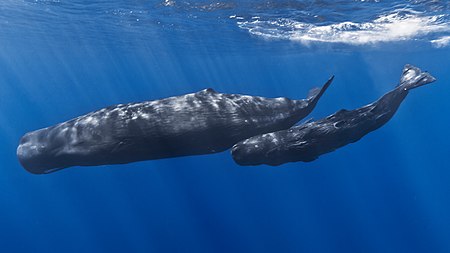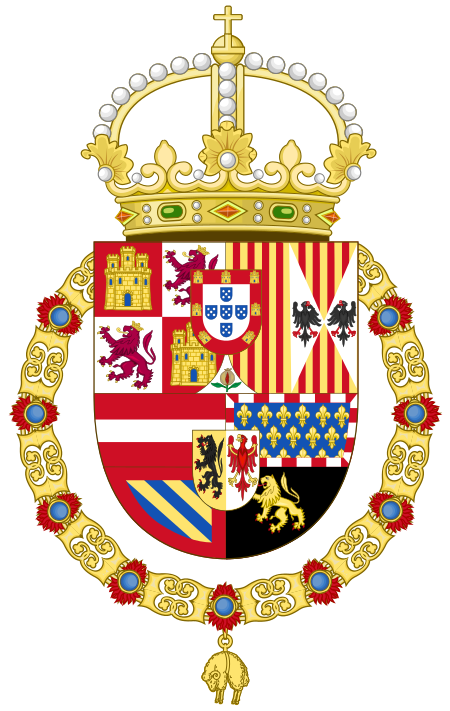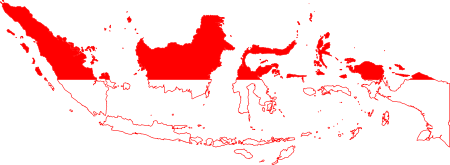Castel di Iudica
| |||||||||||||||||||||||||||||||||||||||||||||||||||||
Read other articles:

Ikan skulpin bersirip-panjang (Jordania zonope) Paus sperma, contoh hewan akuatik yang bernapas. Hewan akuatik atau hewan air adalah hewan yang hidup, baik seluruh hidupnya maupun sebagian hidupnya, dihabiskan di air.[1] Banyak serangga seperti nyamuk, capung, dan lalat capung memiliki stadium larva yang hidup di air dan kemudian bentuk dewasa yang bersayap. Hewan air dapat menghirup udara atau mengekstrak oksigen dari air melalui organ khusus yang disebut insang atau secara langsung mel…

Breno BréComune di BrenoLuas • Total58 km2 (22 sq mi)Ketinggian343 m (1,125 ft)Populasi (December 31, 2007) • Total5.014DemonimBrenesiKode area telepon0364Situs webSitus web resmi Breno adalah komune yang terletak di distrik Provinsi Brescia, Lombardy, Italia. Kota Breno memiliki luas sebesar 58 km². Breno memiliki penduduk sebesar 5.014 jiwa. Pranala luar Situs web resmi lbsKomune di Provinsi Brescia, LombardiaAcquafredda • Adro • Agno…

Madilog Title page of the 1951 edition. aPengarangTan Malaka bJudul asliMadilogPenerjemahTed Sprague (dalam bahasa Belanda)NegaraIndonesiaBahasaBahasa IndonesiaSubjekFilsafat (sintesis Materialisme dialektikal dan Logika)Diterbitkan1943Halaman568 (Edisi Indonesia pertama)[1]a Edisi pertama (1943) adalah penerbitan pribadi penulis. b Penerbitan pertama, Malaka menggunakan nama pena Iljas Hussein. Bagian dari seri tentangMarxisme Teori kerja Manifesto Komunis Sebuah Kontribusi untuk K…

Willy Brodus Yos Rohadi Wakil Komandan Rindam II/Sriwijaya Informasi pribadiLahir14 Juni 1975 (umur 48)JakartaSuami/istriNy. Ni Putu Yeni Surya Iriyanti WijayaOrang tuaSukarmo (ayah)Endang Suprapti (ibu)Alma materAkademi Militer (1997)PekerjaanTentaraKarier militerPihak IndonesiaDinas/cabang TNI Angkatan DaratMasa dinas1997—sekarangPangkat KolonelSatuanInfanteri (Kopassus)Sunting kotak info • L • B Kolonel Inf. Willy Brodus Yos Rohadi (lahir 14 Juni 1975) adalah se…

ElizabethOriginal film posterSutradaraShekhar KapurProduserTim BevanEric FellnerAlison OwenDitulis olehMichael HirstPemeranCate BlanchettGeoffrey RushChristopher EcclestonJoseph FiennesRichard AttenboroughKathy BurkeDaniel CraigVincent CasselJohn GielgudPenata musikDavid HirschfelderSinematograferRemi AdefarasinPenyuntingJill BilcockDistributorPolygram Filmed EntertainmentGramercy PicturesTanggal rilis8 September 1998 (1998-09-08) (VFF)01998-10-2323 Oktober 1998(United Kingdom)Durasi1…

Don Juan de AustriaLukisan cat minyak pada kanvas, paruh ke-2 abad ke-16, kemungkinan besar karyaJuan Pantoja de la Cruz.Koleksi Museo del Prado, Madrid.Lahir(1547-02-24)24 Februari 1547RegensburgMeninggal1 Oktober 1578(pada usia 31 tahun)Bouge, dekat NamurOrang tuaKarl V, Kaisar Romawi SuciBarbara Blomberg Wangsa HabsburgCabang Spanyol Kaisar Carlos V(Raja Carlos I) Anak Felipe II dari Spanyol Maria de Austria, Permaisuri Kaisar Romawi Suci Juana dari Spanyol Don Juan (anak luar nikah) Margarit…

Yves Guéna Yves Guéna en 2008. Fonctions Président du Conseil constitutionnel français 1er mars 2000 – 9 mars 2004(4 ans et 8 jours) Prédécesseur Roland Dumas Successeur Pierre Mazeaud Membre du Conseil constitutionnel 20 janvier 1997 – 9 mars 2004(7 ans, 1 mois et 18 jours) Président Roland DumasLui-même Prédécesseur Étienne Dailly Successeur Jacqueline de Guillenchmidt Vice-président du Sénat 8 octobre 1992 – 12 janvier 1997(4 ans, 3 mois e…

Aditya GumayLahirAditya Gumay4 Oktober 1966 (umur 57)Jambi, IndonesiaPekerjaanSutradaraPenulis naskahProduser eksekutifTahun aktif1986 - sekarang Aditya Gumay (lahir 4 Oktober 1966) adalah sutradara film berkebangsaan Indonesia. Namanya mulai dikenal publik sejak menyutradarai acara Lenong Bocah yang ditayangkan oleh stasiun TPI pada dekade 1990-an. Ia adalah pengasuh sanggar Kawula Muda dan sanggar Ananda yang didirikannya pada tahun 1986. Sanggar itu yang banyak membantu ikut mengorb…

Statistik Ibu kota:Hradec Kralove Wilayah:4,758 km² Penduduk:548,437 (2002) Peta Region Hradec Králové (bahasa Ceko Královéhradecký kraj) adalah sebuah daerah administratif (bahasa Ceko: kraj) Republik Ceko, dan terletak di sebelah utara. Ibu kotanya adalah Hradec Králové. lbsRegion di Ceko Bohemia Selatan Bohemia Tengah Hradec Králové Karlovy Vary Liberec Moravia Selatan Moravian-Silesian Olomouc Pardubice Plzeň Praha Vysočina Zlín Ústí nad Labem Artikel bertopik geografi a…

Kawasan Konservasi perairan Daerah Lombok Timur (KKPD Lombok Timur) adalah salah satu kawasan konservasi perairan daerah yang ada di Nusa Tenggara Barat, Indonesia. Dalam pembagian administratif Indonesia, KKPD Lombok Timur berada di wilayah administratif Kabupaten Lombok Timur. Nama lainnya adalah Kawasan Konservasi Laut Daerah Gili Sulat dan Gili Lawang. Dasar hukum penetapannya adalah Surat Keputusan Bupati Lombok Timur Nomor 188.45/332/KP/2014. Surat keputusan ini diterbitkan pada tanggal 11…

Perpustakaan Umum MinneapolisMinneapolis Public LibraryMinneapolis Public LibraryPerpustakaan Pusat yang baru, dirancang oleh César Pelli, selesai pada tahun 2006.Informasi umumLokasiMinneapolisAlamat300 Nicollet Mall Minneapolis, MN 55401NegaraAmerika SerikatMulai dibangun1885 Perpustakaan Umum Minneapolis adalah perpustakaan yang melayani penduduk Minneapolis, Minnesota di Amerika Serikat. Didirikan pada tahun 1885 dengan pembentukan Dewan Perpustakaan Minneapolis oleh amendemen Piagam Kota M…

追晉陸軍二級上將趙家驤將軍个人资料出生1910年 大清河南省衛輝府汲縣逝世1958年8月23日(1958歲—08—23)(47—48歲) † 中華民國福建省金門縣国籍 中華民國政党 中國國民黨获奖 青天白日勳章(追贈)军事背景效忠 中華民國服役 國民革命軍 中華民國陸軍服役时间1924年-1958年军衔 二級上將 (追晉)部队四十七師指挥東北剿匪總司令部參謀長陸軍總�…

Fictional character Nilin Cartier-WellsFirst appearanceRemember Me (2013)Created byJean-Maxime MorisDesigned byMichel KochVoiced byEN: Kezia Burrows[1]FR: Jessica Monceau[2] Nilin Cartier-Wells is a fictional character and the main protagonist of the action-adventure video game Remember Me, designed by Dontnod Entertainment and published by Capcom in 2013. Born as Nilin Cartier-Wells, she is an amnesiac freedom fighter recruited by a mysterious man named Edge to bring down Memori…

Small nucleolar RNA Me28S-U3344Predicted secondary structure and sequence conservation of snoMe28S-U3344IdentifiersSymbolsnoMe28S-U3344Alt. SymbolssnoMe28S-U3344a; sno28S-U3344aRfamRF00526Other dataRNA typeGene; snRNA; snoRNA; CD-boxDomain(s)EukaryotaGOGO:0006396 GO:0005730SOSO:0000593PDB structuresPDBe In molecular biology, Small nucleolar RNA Me28S-Um3344 is a non-coding RNA (ncRNA) molecule which functions in the modification of other small nuclear RNAs (snRNAs). This type of modifying RNA is…

Chile's dominant stock exchange This article includes a list of general references, but it lacks sufficient corresponding inline citations. Please help to improve this article by introducing more precise citations. (September 2013) (Learn how and when to remove this message) Santiago Stock ExchangeBolsa de Comercio de SantiagoTypeStock exchangeLocationSantiago, Chile,FoundedNovember 27, 1893OwnerMILAKey peopleJosé Antonio Martínez Zuggarramurdi (CEO) Pablo Yrarrázaval Valdés (Chairman)N…

Asie de l'Ouest Localisation de l'Asie de l'Ouest. Pays 19 États reconnus Arabie saoudite Arménie Azerbaïdjan (partiellement) Bahreïn Chypre Égypte (Sinaï) Émirats arabes unis Géorgie (partiellement) Liban Irak Iran Israël Jordanie Koweït Oman Qatar Syrie Turquie (partiellement) Yémen 5 États non reconnus Abkhazie Ossétie du Sud-Alanie Chypre du Nord Palestine Kurdistan modifier L'Asie de l'Ouest, parfois Asie occidentale, Asie du Sud-Ouest ou Asie sud-occidentale est la r…

British politician (born 1967) The Right Honourable SirGraham BradyMPOfficial portrait, 2020Chairman of the 1922 CommitteeIncumbentAssumed office 20 January 2020Acting: 3 September 2019 – 20 January 2020LeaderBoris JohnsonLiz TrussRishi SunakPreceded byDame Cheryl Gillan andSir Charles WalkerIn office26 May 2010 – 24 May 2019LeaderDavid CameronTheresa MayPreceded bySir Michael SpicerSucceeded byDame Cheryl Gillan and Sir Charles Walker Shadow portfolios Shadow Minister for Europ…

馬哈茂德·艾哈迈迪-内贾德محمود احمدینژاد第6任伊朗總統任期2005年8月3日—2013年8月3日副总统帷爾維茲·達烏迪穆罕默德-禮薩·拉希米领袖阿里·哈梅內伊前任穆罕默德·哈塔米继任哈桑·魯哈尼不结盟运动秘书长任期2012年8月30日—2013年8月3日前任穆罕默德·穆尔西继任哈桑·魯哈尼德黑蘭市長任期2003年6月20日—2005年8月3日副职阿里·賽義德盧前任哈桑·馬利克邁達尼继�…

2016年美國總統選舉 ← 2012 2016年11月8日 2020 → 538個選舉人團席位獲勝需270票民意調查投票率55.7%[1][2] ▲ 0.8 % 获提名人 唐納·川普 希拉莉·克林頓 政党 共和黨 民主党 家鄉州 紐約州 紐約州 竞选搭档 迈克·彭斯 蒂姆·凱恩 选举人票 304[3][4][註 1] 227[5] 胜出州/省 30 + 緬-2 20 + DC 民選得票 62,984,828[6] 65,853,514[6] 得…
2020年夏季奥林匹克运动会马来西亚代表團马来西亚国旗IOC編碼MASNOC马来西亚奥林匹克理事会網站olympic.org.my(英文)2020年夏季奥林匹克运动会(東京)2021年7月23日至8月8日(受2019冠状病毒病疫情影响推迟,但仍保留原定名称)運動員30參賽項目10个大项旗手开幕式:李梓嘉和吳柳螢(羽毛球)[1][2]閉幕式:潘德莉拉(跳水)[3]獎牌榜排名第74 金牌 銀牌 銅牌 �…


